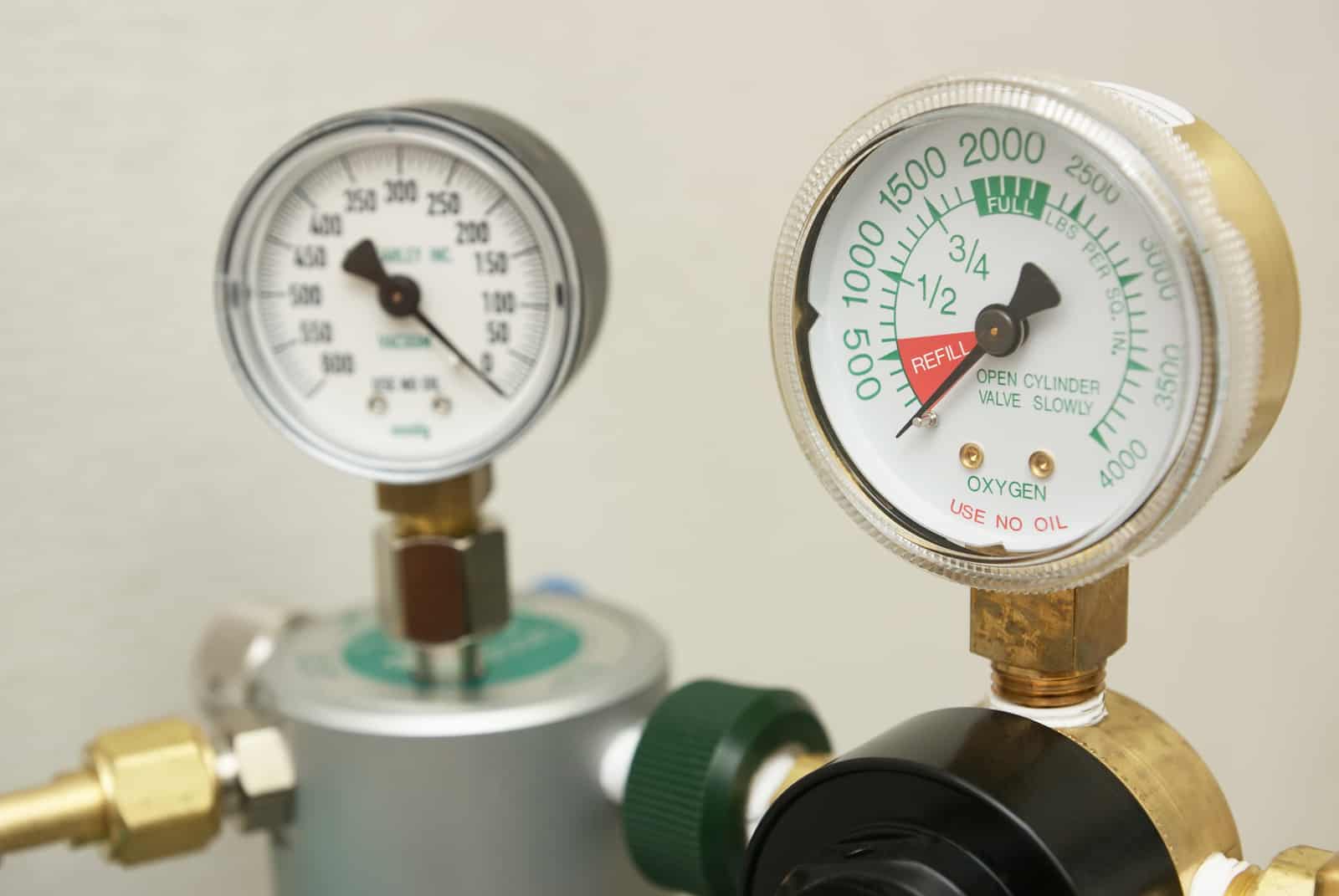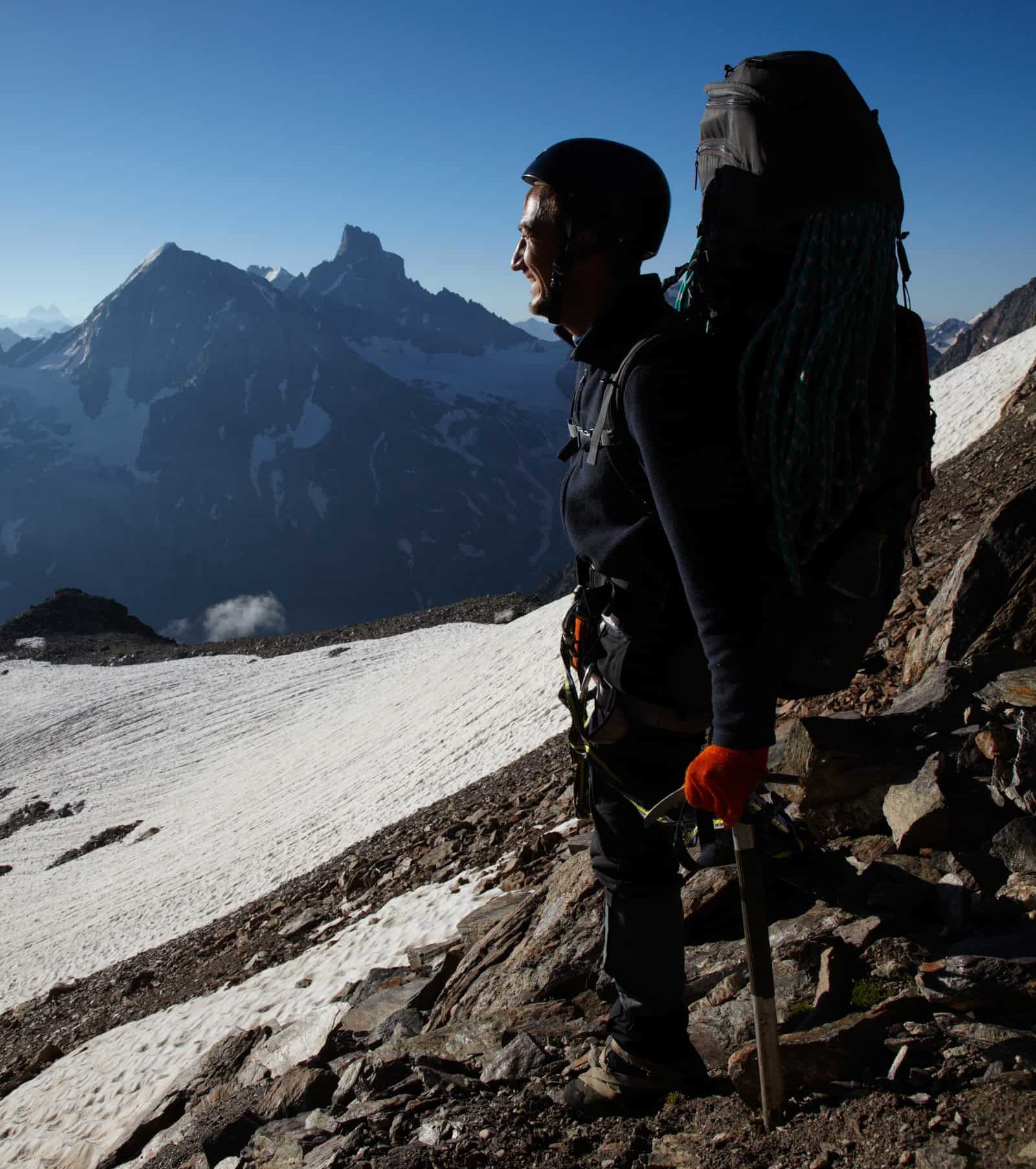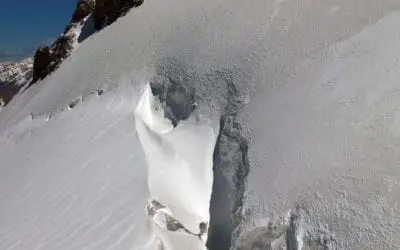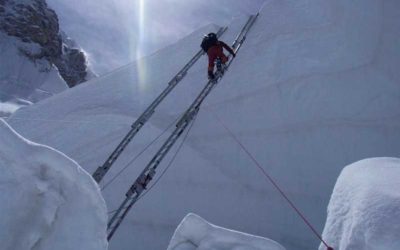
Mountaineers that climb at high altitudes often carry oxygen. There’s a good reason for doing this, even though carrying it with them means extra weight when you’re already working really hard to climb under extreme conditions. I mean anyone who has gone scuba diving knows just how backbreaking those oxygen cylinders can be, so why would anyone be stupid enough to carry them up to the top of a mountain?
In this article, I will investigate the reasons for mountaineers carrying oxygen along with the effects of high altitude on the body and the working of oxygen cylinders.
Contents
Introduction
As altitude increases, the barometric pressure drops, causing the air to thin. This decreases the atmospheric concentration of oxygen. In short, it’s harder to breathe at high altitudes since there’s less oxygen available to you in the first place.
Humans need oxygen in order to survive and function optimally. When you’re not getting enough oxygen, your physical and cognitive abilities get adversely affected and your body mass and composition and your immune system get negatively affected. So, it makes sense to carry oxygen when climbing at high altitudes.
Effects of Altitude on the Body
At high altitudes you also run the risk of altitude-related sicknesses, like acute mountain sickness. This potentially lethal condition is treated by descending to a lower altitude, either on foot or via airlift (airlifts are not always possible).
It is possible to mitigate these effects of high altitudes with proper acclimatization. If you increase altitude too quickly (forced ascent), your body basically gets shocked by the sudden change, increasing the risk of developing altitude-related sicknesses. To protect your ability to function and successfully summit the mountain you’re attempting, it’s important to gradually increase your altitude and stay at slightly elevated levels for a few days or weeks, depending on your situation.
How you adjust to high altitudes has nothing to do with your level of physical fitness. You either cope well or you don’t, almost like being prone to motion sickness or allergies.
Proper training teaches your body to have a higher oxygen efficiency, leading you to need less oxygen for the same amount of energy expended. This training is vital of optimal performance at higher altitudes.
Let’s look at what happens inside your body:
At higher altitudes, our bodies respond to the lack of oxygen by trying to breathe more in order to take in more oxygen. Even with this effort to counter the lack of oxygen in the air, less oxygen enters your bloodstream than at sea level. This means that less oxygen reaches your muscles. Since your muscles need oxygen in order to work properly, your ability to exercise is negatively affected at high altitudes.
Added on to this, you will experience increased water loss, which could lead to dehydration, and increased metabolism coupled with suppressed apatite. This means that your body will use more energy, even while resting, than at sea level and that you will need to take in more nutrients than you did at sea level.
After a few days or weeks, the ratio of blood vessel to muscle mass will also increase along with the haemoglobin levels. Haemoglobin is the protein that carries oxygen in your blood.
Mountaineers can trick their bodies into having more oxygen available in order to function closer to their performance at sea level.
The first option is wearing a pressurized suit similar to what high-altitude pilots and astronauts would wear. It’s expensive and doesn’t work all that well.
The second option is to breathe a mixture of air containing 63% oxygen rather than the 21% oxygen you get in normal atmospheric air.
Why 63% oxygen? Atmospheric air contains 21% oxygen. Barometric pressure at high altitudes (such as on mount Everest) is a third of the pressure at sea level. In order to obtain the same amount of oxygen with each breath, you need to inhale three times as much oxygen per litre of air, hence 63%.
Why Do Mountaineers suffer from nose bleeding at high altitudes?
There are several reasons why alpinists suffer nosebleeds at higher altitudes. All have to do with the environment that mountain climbers are exposed to:
- Cold dry air makes blood vessels located on the inner surface of nares to dry out and become cracked.
- Thinner air means less oxygen and less air pressure pushing in on a climbers body.
- The exertion of climbing increases the climber’s heart rate and blood pressure.
See, the more heights you go, the more drop in atmospheric pressure takes place. In normal atmospheric pressure at the ground level, the pressure outside in the atmosphere is more than the pressure of the blood inside our body. So, it remains inside as the pressure gradient is towards inside.
But when you go to higher altitudes, the colder, drier and thinner the atmosphere gets.
He or she is sucking in cold dry air through their mouth and nostrils. This causes the blood vessels located on the inner surface of nares to dry out and become cracked.
The atmospheric pressure decreases drastically and hence the pressure of our blood inside becomes more than the external pressure.
Combine the higher pressure inside the blood vessels with the dry cold air cracking the outer surface and throw in the lower atmospheric pressure pressing on the outside of the same blood vessels and blood starts leaking out of those vessels.
How to Stop Nose Bleeding at high altitude
Solutions to help with nose bleeding can be to take nose hits from the steam billowing off of mugs of tea in an attempt to moisturize the nostrils. It would provide a small measure of relief. Wrapping a muffler across the mouth can also help.
Logistics of Carrying Oxygen
Oxygen cannisters are heavy and expensive and taking them up a mountain can be a logistical nightmare. Full cannisters must be taken up, empty cannisters must be taken down to be refilled. In order to use them, you need masks and a pack to carry them in. All of this is extra luggage that needs to go up to whatever camp they will be stored at.
Higher mountains, such as Everest, don’t have transport at higher altitudes. Everything gets carried by Sherpas. Even if you have transport available, it will be of limited capacity and will mainly be used to carry food, tents, water and other necessities.
Carrying an oxygen cannister is also extra weight for the mountaineer, who would already be severely hampered by the effects of altitude.
For this reason, oxygen cannisters are used sparingly, often only for the last few days leading up to summit day. This last stretch requires the highest exertion, often for the longest pushes on the trek. Summit day on Everest can last up to twenty hours, an astronomical feat for any person at that altitude. The economics (financially and performance-related) of using it at lower altitudes are just not viable.
Another factor to take into account, is that, if your body is used to functioning with the enriched oxygen in cannisters, running out of oxygen at high altitude could have serious repercussions. Suddenly, your body will be forced to function with a much lower concentration of oxygen without proper acclimatization, which could lead to black-outs. Since the weather conditions at that altitude is extreme, black-outs pose a very real risk of death by hypothermia. For this reason, planning your oxygen use properly is vital.
At What Altitude Do You Need Oxygen?
8000 meters above sea level is called the death zone. Here, the air is so thin that only 30% of the oxygen you would inhale at sea level is available. Most people would black out after being at this altitude for a few minutes. For this reason, most people would use oxygen-enriched air when climbing above 8000 meters. There are a few people who have climbed as high as 8848 meters without using oxygen (think Reinhold Messner), but this is dangerous and definitely not recommended.
Most of the climbers who died on Everest, were in the death zone. Helicopters can’t fly at this altitude, so many of the bodies are left on the mountain with no means to safely retrieve them.
How Does an Oxygen Cylinder Work?
Oxygen cylinders are carried in a backpack or sling fastened to the back of each climber. From here, a hose or tube (made from speciality rubber) delivers the oxygen-enriched air to an accumulator or reservoir. From here, a regulator manages the air flow into a mask that covers the climber’s face and mouth. The regulator is basically a one-way valve, ensuring that air exhaled by the climber does not go back into the cylinder.
With each exhalation, the incoming oxygen-enriched mixture accumulates in the accumulator. When inhaling, this is delivered to the climber first. Once depleted, a secondary valve opens, allowing ambient air into the mask. This means that the first portion of every breath is enriched, while the second portion is the oxygen-poor ambient air.
In order to conserve the precious oxygen supply, flow levels are kept low. This means that climbers are effectively inhaling a mixture of the atmospheric air and oxygen enriched air from the cylinders. Flow rates on Mt Everest vary from 0.5 – 1.0 litre per minute (when sleeping) to 2.0 – 3.0 litre per minute (when climbing). This may change, depending on the altitude and availability of oxygen cylinders. The flow rate should also be matched to your pace. If you’re going too fast for the flow rate, you won’t get enough oxygen, while going too slow would waste oxygen, since you’re getting more than you need.
Most cannisters weigh between 2.5 and 3.5 kilograms and contain between 3.0 and 4.0 litres of oxygen-enriched air. This is enough for a few hours of active climbing or 15 hours at rest.
Since temperatures are far below zero at high altitudes, you have to take into account even more technical difficulties. Low temperatures cause valves to freeze, meaning you can’t always open your tank or adjust the flow of oxygen. The masks used to deliver the oxygen to the user often deform in the extreme winds on the mountain.
As if that isn’t enough already, ice forms in the tubes, further inhibiting the delivery of oxygen to the user. These factors must all be taken into account and catered for, since deliver too much oxygen would waste this precious commodity, while delivering too little could result in the death of the climber.

Conclusion
Oxygen cylinders are used at high altitudes to protect climbers and ensure that they have the oxygen they need to function properly. It is important to understand how these work and how to properly use them before you start your trek
Written by Felix

About me
Hi! I’m Felix. When I’m not spending time out in the mountains, I like to write about my hobbies. That is how Mountain Homies was created. On this site, I try to gather all the juicy information about Mountaineering that I have learned since I started. Happy adventures!
Related Articles
3 Ways to Spot and Reveal a Crevasse (And Avoid It)
So, how do you spot a crevasse and – more importantly – avoid falling into one? In this article, I will have a look at what crevasses are and how to detect them…
5 Ways of Knowing If Your Climbing Shoes Are Too Big
It has almost become a prestige among climbers to be able to boast about how small and tight climbing shoes can be used. There is therefore a lot of talk…
3 Clever Ways of Crossing A Crevasse
When you’re mountaineering in snow country, you will undoubtedly encounter some crevasses. These are scary, since you don’t always spot them…
Stay Up to Date With The Latest News & Updates
Join Our Newsletter
The owner of this site is a participant in the Amazon Services LLC Associates Program, an affiliate advertising program designed to provide a means for sites to earn advertising fees by advertising and linking to amazon.com.



